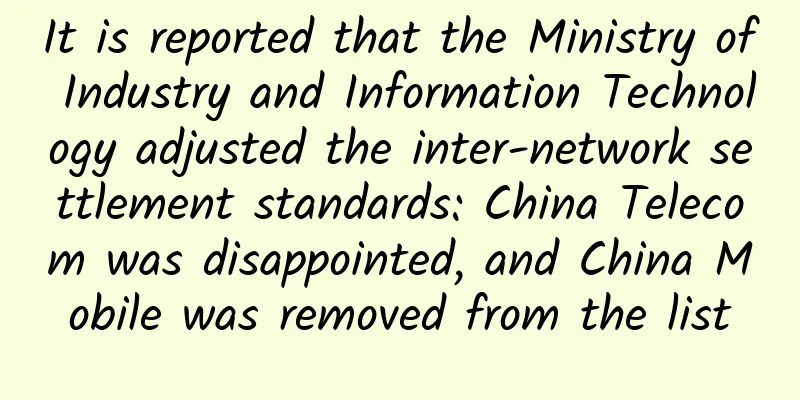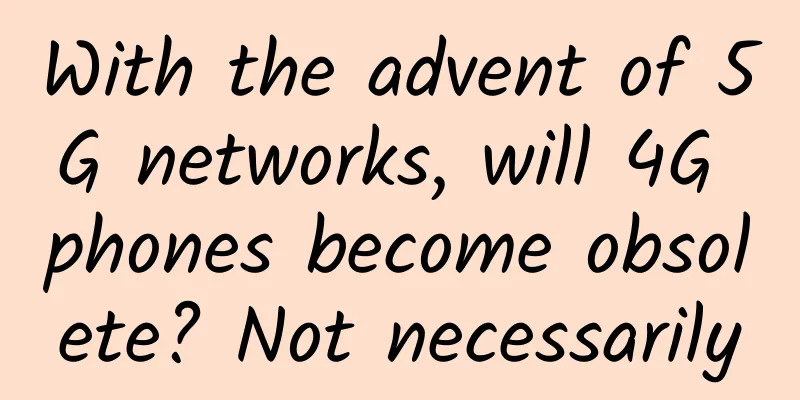Why Wi-Fi will not disappear but become more important in the 5G era?

|
This article is reproduced from Leiphone.com. If you need to reprint it, please go to Leiphone.com official website to apply for authorization. In 2019, operators in South Korea, the United States, China and other countries launched 5G commercial services one after another, leading many people to believe that the popularization of 5G will lead to the demise of Wi-Fi. The basis for this judgment is that, on the one hand, the price of traffic in the 4G era is already cheap enough, and on the other hand, 5G's higher speed and greater bandwidth will be enough to meet application needs and replace Wi-Fi. However, both the industry's investment situation and the proportion of Wi-Fi in Internet access indicate that Wi-Fi will not only not die out in the 5G era, but will become more important.
【Image source: 7signal】 In the 5G era, 70% of data transmission will be via Wi-Fi To judge whether a technology has prospects, the direction of capital is a good reference. We have seen that many large mergers and acquisitions in 2019 are related to Wi-Fi 6. In March 2019, ON Semiconductor announced the acquisition of Quantenna for US$1.07 billion. ON Semiconductor hopes to combine Quantenna's Wi-Fi technology and software to create a powerful platform to meet the needs of the fast-growing low-power connection market in industrial and automotive applications. In May, NXP Semiconductors announced that it would acquire Marvell Technology's wireless connectivity business for US$1.76 billion in cash to provide its customers with a richer product portfolio. In June, Infineon announced that it would acquire Cypress for $23.85 per share in cash, with a total enterprise value of 9 billion euros (about $10.1 billion). The acquired Cypress has a differentiated product portfolio including microcontrollers, software and connectivity components, which can highly complement Infineon's leading power semiconductors, sensors and security solutions. You should know that Qualcomm and MediaTek, two major players in the Wi-Fi field today, also seized the opportunity of Wi-Fi development through acquisitions and gained a higher market share. Regarding these three Wi-Fi 6-related mergers and acquisitions, Wang Long, executive vice president of Unisoc, said in an interview with Leifeng.com and other media this week: "ON Semiconductor, NXP, and Infineon's businesses hardly involved Wi-Fi and Bluetooth before. Their large-scale mergers and acquisitions show that everyone is optimistic about Wi-Fi. But when 5G is about to develop in an all-round way in 2019, isn't it a bit strange to spend a huge amount of money on Wi-Fi?"
Wang Long, Executive Vice President of Unisoc Wang Long gave a data that the proportion of data transmission using Wi-Fi in the 2G era was about 20%, about 30% in the 3G era, and about 40% in the 4G era, but in the 5G era, the proportion of data transmitted via Wi-Fi will reach 70%. "From the 2G era to the 5G era, the transmission capacity of mobile communication technology has become increasingly stronger, but the proportion of data transmitted via Wi-Fi has increased instead. This is because the amount of data is doubling every year, but there are not enough transmission channels, so a large amount of data still needs to be transmitted via Wi-Fi." Wang Long explained. Another data can also prove this: Cisco Visual Networking Index (VNI) forecasts that by 2021, more than half (56%) of connected flat-panel TVs will be 4K TVs, while 4K TVs only accounted for 15% of connected flat-panel TVs in 2016. This means that 4K TVs and 4K videos will bring more data transmission requirements, and Wi-Fi will transmit more data. Cisco's forecast also points out that in 2016, Wi-Fi accounted for 52% of Internet access, cellular accounted for 10%, and fixed lines accounted for 38%. In 2021, Wi-Fi will account for 53% of Internet access, cellular will account for 20%, and fixed lines will account for 27%. The traffic generated by Wi-Fi and mobile Internet devices will account for 73% of Internet traffic. Although Wi-Fi will transmit more data in the future, Wang Long pointed out that from the market perspective, the global annual Wi-Fi shipment scale is about 3 billion devices, of which mobile phones account for the largest proportion, accounting for 55% in 2017 and 49% in 2018. In general, mobile phones are basically no longer growing, but non-mobile phone business is constantly increasing. Non-mobile phone business is also a market that ON Semiconductor, NXP, and Infineon are optimistic about in their Wi-Fi deployment. 5G and Wi-Fi 6 will complement and coexist The key reason why Wi-Fi can play a valuable role in the 5G era is that Wi-Fi technology is constantly evolving, just like mobile communication technology. The three major characteristics of 5G are high bandwidth, large connections, and low latency, namely eMMB, mMTC, and URLLC. Wi-Fi is also evolving in these directions. Compared with eMMB, 802.11ax, or Wi-Fi 6, can provide higher bandwidth, and the United States and Europe are still discussing the opening of the 6 GHz frequency band. This means that networks built on Wi-Fi's spectrum resources can carry out more high-speed data transmission. In terms of mMTC, Wi-Fi's 802.11az and 802.11ba are also being explored. In terms of URLLC, Wi-Fi's 802.11bb is exploring the use of light for signal transmission, and 802.11bd will be used to enhance the application of the Internet of Vehicles, which is also one of the important application scenarios of 5G. In addition to the fact that Wi-Fi has always been accompanying the evolution of mobile communications, Wang Long believes that Wi-Fi and 5G will not replace each other but will complement and coexist for two other important reasons. One is that with the continuous emergence of new applications, such as 8K TV and high-fidelity lossless music, the amount of data is growing every year. No matter which transmission method is used, it has its bandwidth limitation and cannot meet the needs of all applications. Wi-Fi and 5G have their own spectrum resources, and both can increase data transmission channels and jointly meet the needs of data growth pole transmission. Another reason is that Wi-Fi 6 is still a relatively lightweight connection technology that costs much less than 5G, and the cost of the router is also much lower than that of 5G CPE. So how do 5G and Wi-Fi complement each other? For example, in terms of bandwidth and stability, Qualcomm, MediaTek, HiSilicon, and Unisoc have all launched dual Wi-Fi connection solutions. The so-called dual Wi-Fi connection means that communication devices such as mobile phones and TVs can connect to Wi-Fi networks through 5 GHz and 2.4 GHz at the same time. Such a connection can bring greater bandwidth through the 5 GHz frequency band while reducing interference from 2.4 GHz connections (such as microwave ovens), improving speed while also bringing higher stability. But this involves a big challenge: how to reduce power consumption while increasing bandwidth by 4 times. Wang Long introduced that the third-generation Wi-Fi 5 (11ac) wireless connection solution Chunteng 5623 of Unisoc that we just released supports dual connection. It not only has low power consumption, but also has excellent performance and good compatibility. Leifeng.com learned that currently only HiSilicon and Unisoc can provide Wi-Fi 5 chips in China. There are also positioning applications. We all know that positioning can be performed with the help of 5G base stations. In fact, both Wi-Fi and Bluetooth can perform high-precision indoor positioning. Wang Long introduced that AoA and AoD in the Bluetooth standard are angle positioning, and FTM in the Wi-Fi standard uses delay positioning, with a positioning level of meters. But it can also be done at the centimeter level. For example, in the laboratory, we have seen that Bluetooth can be positioned by angle plus phase difference, and it can also be done at the centimeter level. It is reported that Ivy 5623 supports indoor positioning based on the fusion of Bluetooth AoD/AoA and Wi-Fi FTM RTT, and can achieve precise positioning in application scenarios such as indoor navigation, reverse car search, and shopping mall diversion. New opportunities brought by 5G and Wi-Fi 6 5G and Wi-Fi will jointly meet the growing demand for data, but at the same time, we must also see that with the development of the market and the completion of mergers and acquisitions, the wireless communication market has become a game that only giants can afford to play, and a higher entry threshold has been built. Unisoc is one of the few companies in China that can participate in the competition in the wireless communication industry. For consumer electronics such as mobile phones, it has released its first 5G modem, the Ivy 510, during the MWC earlier this year. Currently, only Qualcomm, MediaTek, Huawei, Unisoc, and Samsung have 5G modems in the world. In addition to the 5G modem, 5G makes the design of the RF front-end increasingly difficult and complex. Although facing various challenges, this is also an opportunity for Chinese companies. As for Unisoc, it had a high market share in the RF front-end market in the 2G and 3G eras, but its market share was not high in the 4G era because the complexity of RF became higher and higher in 4G, and the mid-to-high-end market was monopolized by international manufacturers. In the 5G era, Wang Long believes that Unisoc has great opportunities. He said that the development cost of 5G RF front-end has risen sharply, and the performance requirements are very high. We are large enough and have sufficient investment. In addition, our rich development experience in 2G/3G/4G RF front-end and our deep understanding of 5G baseband will help us launch more competitive baseband plus RF solutions. In addition to 5G, Unisoc is also continuously launching new products in Wi-Fi, Bluetooth and other pan-connectivity technologies. Ivy 5623 is Unisoc's third-generation Wi-Fi5 chip solution, which has advantages in Wi-Fi throughput, LTE coexistence technology, new Bluetooth technology and integrated positioning, and is specially designed for various applications in smart homes. In terms of Bluetooth, Unisoc has its own core patents for TWS and has launched the ultra-low-power TWS Bluetooth headset chip Ivy 5882. summary The commercial use of 5G has led many people to believe that Wi-Fi will be replaced. However, this obviously ignores the demands brought by new applications, such as 8K video, AR, VR, high-fidelity audio, etc., which will bring about rapidly growing data transmission needs. A single wireless communication method alone cannot meet various needs. Therefore, in the 5G era, Wi-Fi will not only not be replaced, but there will be more data transmission application scenarios. However, whether in the field of mobile communications or short-distance wireless transmission, there are fewer and fewer professional manufacturers, and the threshold is getting higher and higher. Ziguang ZTE continues to launch innovative and highly competitive products based on its existing technological accumulation, which has a very positive effect on the development of the domestic semiconductor industry. |
<<: 5G is coming, these 10 common things will disappear in the future
Recommend
HTTP methods and usage scenarios
HTTP (Hypertext Transfer Protocol) methods, also ...
Education takes off with 5G smart technology
Education is the foundation of a country, and 5G ...
Weibu Online OneDNS helps the real estate industry with network security
If you are the only security manager of a real es...
What role does Wi-Fi-6 play in the field of industrial IoT?
5G technology has enough advantages to support so...
How long will it take for 5G small base stations to "take off"?
In the era of rapid changes in information and co...
Looking at 5G from a different perspective: Don’t talk about technology, talk about demand
[[280015]] 4G changes life, 5G changes society. W...
Awesome, my network
China's broadband speed used to be disappoint...
Three-minute review! A quick overview of 5G industry development trends in May 2021
After the rapid development in 2020, 2021 is a cr...
Talk about the difference between continuous integration, continuous delivery, and continuous deployment
CI needs to have the following: Comprehensive aut...
The Bluetooth market will grow steadily in the future, and the Bluetooth SIG will continue to make efforts
On April 15, the Bluetooth Special Interest Group...
The new infrastructure will release new momentum. How will these seven major sub-sectors develop?
Recently, the Standing Committee of the Political...
5G mobile phones are coming! Who will be the next Nokia?
"With 43 million analog mobile phone users, ...
Wu Hequan: The proportion of IPv6 traffic in domestic applications still needs to be improved
At the "2020 China IPv6 Development Forum&qu...
Cisco launches new training and developer programs to accelerate adoption of intent-based networking
June 27, 2017 - Cisco today announced that its gl...
In the next generation technological revolution, the Internet of Things, who will play the role of “vanguard”?
The Internet of Things (IoT) is widely regarded b...









